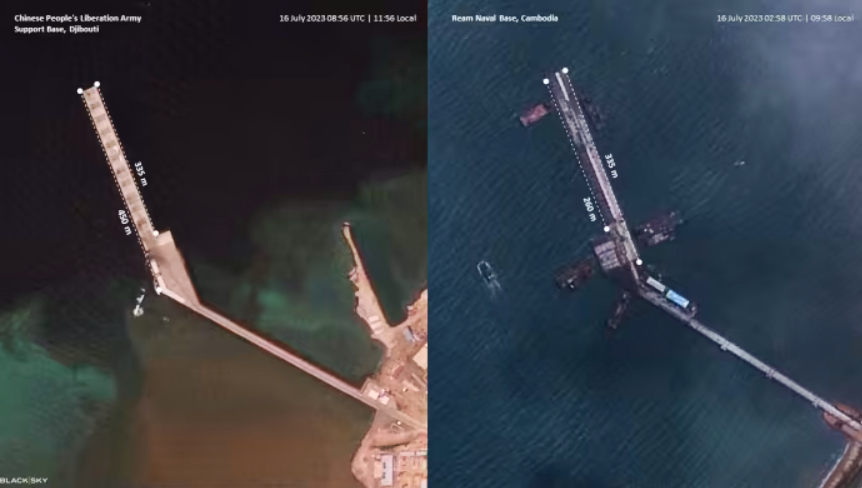On June 4, US Defense Secretary Lloyd Austin arrived in Cambodia for a significant visit aimed at countering China’s expanding influence in the region. This visit occurs amid Washington’s growing concerns about Beijing’s activities at the Ream Naval Base, a strategically located facility on the Gulf of Thailand's coast in Sihanoukville province.
This is Austin’s second visit to Cambodia as Secretary of Defense and marks the first direct bilateral meeting between a US defense chief and Cambodia’s Defense Minister, Tea Seiha. Austin underscored the visit's importance with a post on social media platform X, confirming his arrival in Phnom Penh.
During his visit, Austin met with former Prime Minister Hun Sen, now the Senate president, and discussed strategies to strengthen defense ties with Prime Minister Hun Manet. Both Austin and Hun Manet share a West Point background, fostering hopes of enhanced US-Cambodia cooperation.
A US defense official expressed optimism that Prime Minister Hun Manet, educated at West Point and New York University, might favor closer ties with Washington than his father did. The visit, described as pragmatic, was not expected to yield immediate major agreements but aimed to address past challenges in US-Cambodia relations.
Washington hopes that a new generation of Cambodian leaders, including Hun Manet, will lead to closer cooperation with the US. This was reflected in a Pentagon statement highlighting opportunities to strengthen bilateral defense relations in support of regional peace and security. Key topics included resuming military training exchanges on disaster assistance and UN Peacekeeping, training on de-mining and unexploded ordnance clearance, and access to US military education programs.
Growing Concerns Over Beijing’s Influence
US officials are increasingly alarmed by China’s development of the Ream Naval Base, fearing it might become a new outpost for Beijing near the contested South China Sea. Previously, Ream was a hub for joint US-Cambodia naval training. However, Cambodia demolished a US-built facility there in October 2020, and China began a funded upgrade in June 2022.
US concerns escalated last month when China sent two warships to Cambodia and East Timor, with a stay extended until mid-June. Since December 2023, two Chinese warships, likely corvettes or frigates, have been stationed at Ream, further intensifying US worries.
Cambodian officials have repeatedly denied that the facility would be used by China as a naval base, citing their constitution, which prohibits foreign military bases. Chinese authorities have described the base as an "aid project" to enhance Cambodia’s naval capabilities, dismissing concerns as "hype" with "ulterior motives."
China’s relationship with Cambodia has strengthened through significant investments and high-level interactions. As part of the Belt and Road Initiative, Beijing has invested billions in Cambodia’s infrastructure, including highways and bridges. Recently, Cambodian Prime Minister Hun Manet announced a Chinese-backed $1.7 billion canal project set to begin in August, despite tensions with Vietnam.
Military cooperation between Cambodia and China has also increased, highlighted by their largest annual military exercise, the Golden Dragon Exercises, involving several Chinese warships and hundreds of personnel.

No comments:
Post a Comment